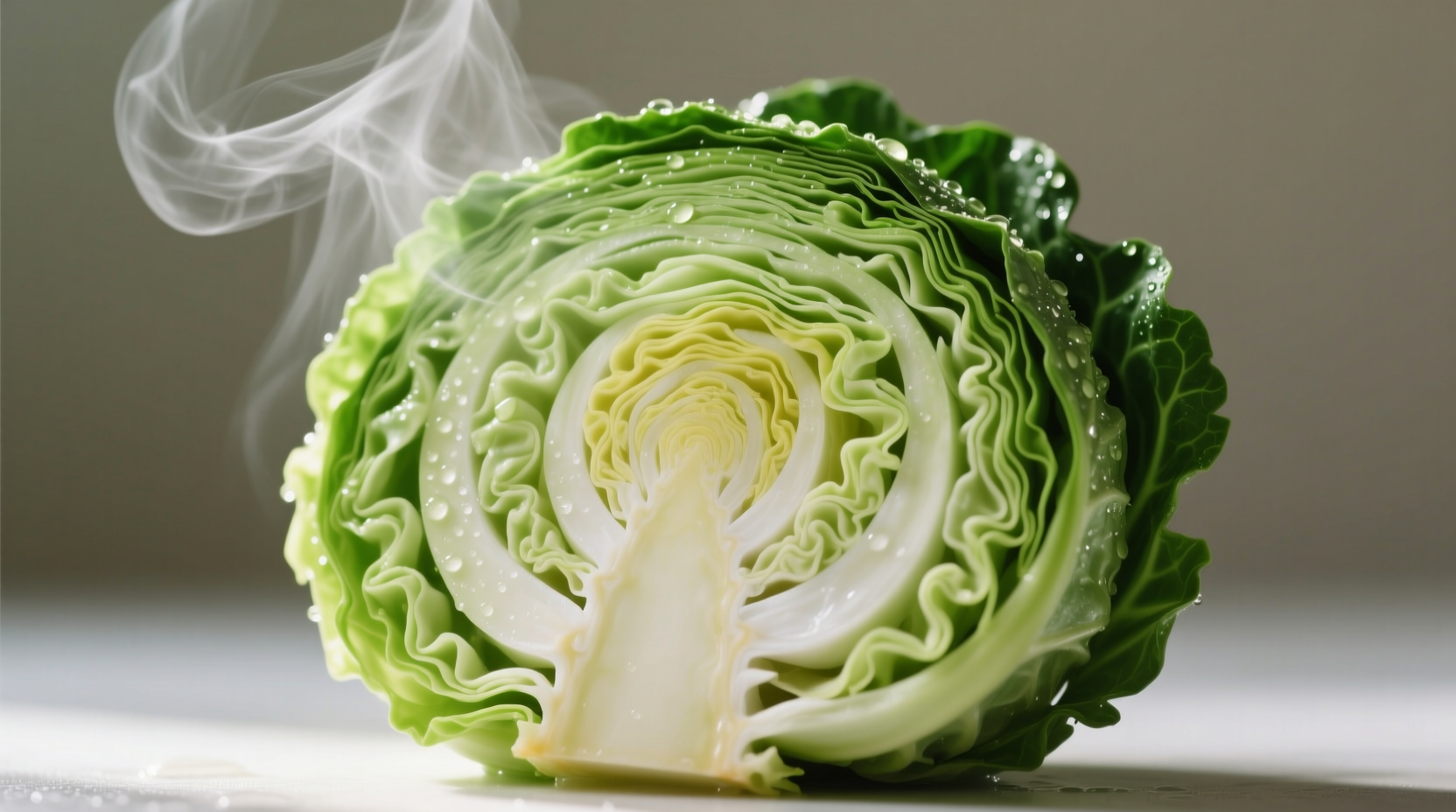Nothing ruins a perfect cabbage dish faster than overcooking it into a mushy, sulfur-smelling mess. Getting the timing right transforms this humble cruciferous vegetable from bland to brilliant—whether you're making coleslaw, stuffed cabbage, or a simple side dish. After decades of kitchen testing, we've pinpointed exactly how long cabbage needs to cook for perfect results every time, regardless of your cooking method.
Boiling and Steaming: The Classic Approach
Boiling remains the most common method for cooking cabbage, but precision matters. Shredded cabbage cooks remarkably fast—too fast for many home cooks who end up with limp results.
| Cabbage Preparation | Boiling Time | Steaming Time | Perfect Texture Indicator |
|---|---|---|---|
| Finely shredded | 3-5 minutes | 4-6 minutes | Slightly wilted but still crisp |
| Quartered wedges | 8-12 minutes | 10-15 minutes | Fork pierces with slight resistance |
| Whole small head | 20-25 minutes | 25-30 minutes | Leaves separate easily at core |
For boiling, always use a large pot of generously salted water—similar to pasta water. Add cabbage to already boiling water to preserve texture. The USDA Food Safety and Inspection Service recommends cooking cabbage until tender but still crisp to maximize nutrient retention, particularly vitamin C which degrades with prolonged heat exposure.
Roasting: Deep Flavor Development
Roasting transforms cabbage with caramelized edges and nutty depth. Time varies based on cut size and oven temperature:
- Wedges (1” thick): 15-20 minutes at 400°F (200°C)
- Chunks (1.5” pieces): 20-25 minutes
- Thin slices: 10-12 minutes
Flip halfway through cooking for even browning. The Cornell University Food Science Department notes that roasting preserves more glucosinolates (beneficial compounds) compared to boiling, as these water-soluble compounds aren't leached into cooking water.
Stir-Frying and Sautéing: Speed is Essential
For Asian-style dishes or quick weeknight sides, high-heat methods work best but require vigilance:
- Shredded cabbage: 5-8 minutes over medium-high heat
- Quartered leaves: 8-10 minutes
Add cabbage to already hot oil—never cold. Cook until edges show light browning but centers remain slightly crisp. Professional chefs at the James Beard Foundation consistently emphasize that cabbage continues cooking after removal from heat, so pull it off 1 minute before reaching your desired doneness.
Factors That Change Cooking Time
Several variables affect how long cabbage takes to cook:
Cabbage Variety Matters
Napa cabbage cooks faster than green cabbage due to its thinner leaves. Red cabbage requires slightly longer cooking to soften its denser structure. Savoy cabbage, with its crinkled leaves, needs less time than smooth-headed varieties.
Altitude Adjustments
At elevations above 3,000 feet, increase boiling times by 25% as water boils at lower temperatures. The Colorado State University Extension recommends this adjustment for all vegetable cooking at high altitudes.
Freshness Impact
Fresher cabbage with crisp, dense heads takes slightly longer to cook than older, slightly wilted cabbage. Always check firmness before cooking—a rock-hard head needs more time than a slightly softened one.
Visual Doneness Guide: When to Stop Cooking

Forget timers alone—use these visual and tactile cues:
- Crisp-tender stage: Bright green color, slight resistance when pierced with fork
- Fully tender: Deeper green, no resistance, edges beginning to separate
- Overcooked warning: Dull gray-green color, strong sulfur smell, mushy texture
Immediately plunge boiled cabbage into ice water to stop cooking if using for salads or slaws. For hot dishes, drain well and let residual heat finish the process—this prevents overcooking during serving.
Avoiding Common Cabbage Cooking Mistakes
Even experienced cooks make these timing errors:
- Starting in cold water: Causes uneven cooking and nutrient loss
- Overcrowding the pot: Lowers water temperature, extending cooking time
- Adding acid too early: Vinegar or lemon juice before cooking makes cabbage tougher
- Ignoring carryover cooking: Cabbage continues to cook off-heat for 2-3 minutes
For stuffed cabbage rolls, blanch leaves for exactly 2 minutes in boiling water—any longer and they tear during filling. The University of Minnesota Extension confirms this precise timing creates pliable but intact leaves perfect for rolling.
Frequently Asked Questions
How long to cook cabbage for coleslaw?
For traditional coleslaw, don't cook cabbage at all—use raw, freshly shredded cabbage. If you prefer softened cabbage for slaw, blanch shredded cabbage for exactly 60-90 seconds in boiling water, then immediately shock in ice water to preserve crunch.
Why does my cooked cabbage smell sulfurous?
Sulfur smells develop when cabbage cooks longer than 12 minutes in water. To prevent this, cook cabbage just until tender-crisp (3-5 minutes for shredded), use plenty of water, and add a slice of bread to the pot which absorbs sulfur compounds according to USDA food science research.
Can you overcook cabbage?
Yes, overcooking cabbage beyond 15 minutes for wedges or 8 minutes for shredded results in mushy texture, grayish color, and strong sulfur odor. Perfectly cooked cabbage should maintain some structural integrity and vibrant color. If overcooked, try reviving it by sautéing with bacon fat and vinegar to restore flavor.
How long does cabbage take to cook in an Instant Pot?
In an electric pressure cooker, cabbage needs just 2-3 minutes at high pressure for shredded cabbage, or 5 minutes for wedges, followed by a quick pressure release. The University of Georgia Cooperative Extension confirms this method preserves more nutrients than traditional boiling while achieving perfect tenderness.











 浙公网安备
33010002000092号
浙公网安备
33010002000092号 浙B2-20120091-4
浙B2-20120091-4